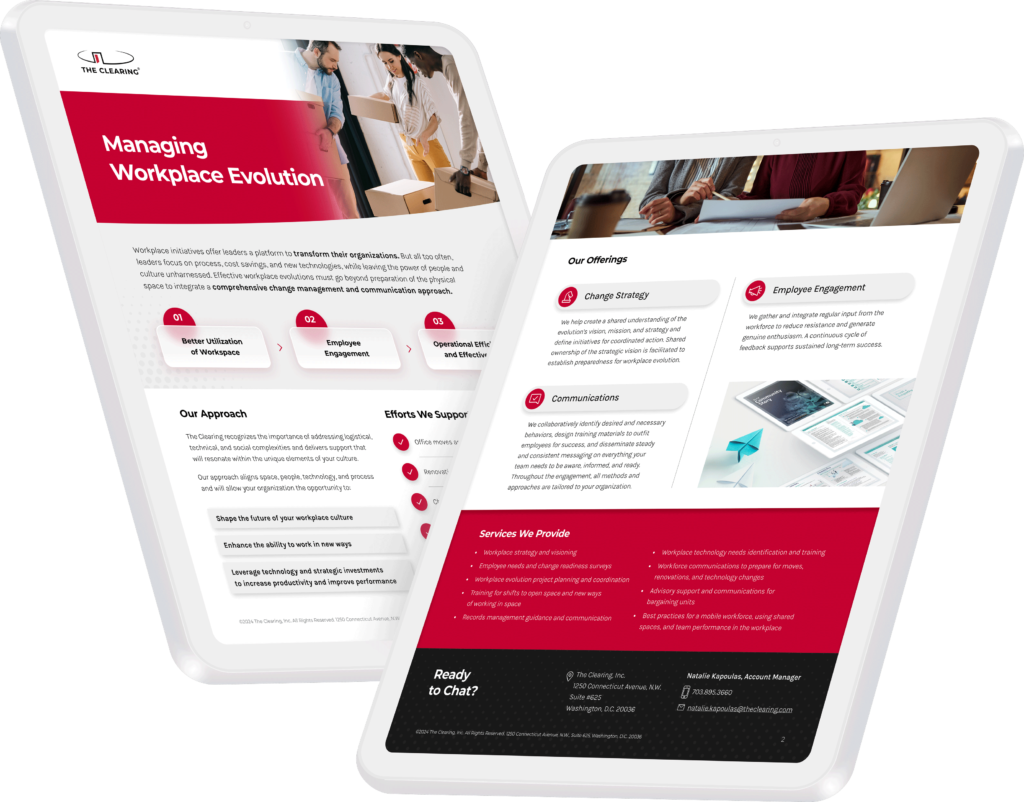In times of change, it is critical that an organization has a vision as the true north for employees to strive toward, in order to avoid fragmentation and negative disruption.
However, according to Gallup, only 22% of employees strongly agree that their leaders have a strong vision for the future.
More and more, leaders are making decisions to modernize aging infrastructure and ways of working, resulting in changes to workplace processes, technology, and space design as organizations. Workplace change — like any other change — also requires strong leadership and a clear vision to bring employees along.
So, how can a leader promote successful workplace change and avoid crippling disruption during the transformation?
Follow These Three Tactics to Optimize Workplace Change
- Align around a compelling change vision for the future workplace — don’t just design around the present. Get clear on your desired future workplace culture, behaviors, space design, technology, and processes — and invest in change management to promote workforce adoption of the change. Get the entire leadership and management team aligned around this future vision and supporting individuals as they transition into the future state.
- Design communications to inform and engage all stakeholders about key decisions, next steps, and new developments. Keep the workforce apprised of progress with the right message via the right channel at the right time. Enroll managers, team leads, and people who have high influence across the organization in sharing messaging and relaying feedback to the team managing the workplace change. These people can act as “change ambassadors” to champion the change effort and are a critical part of the communication network for any change effort.
- Invest in the right training to outfit the workforce for a seamless Day 1 experience in the new workplace. Provide best practices, insights into how to work effectively in new spaces, and “how-to” collateral (e.g., job aids, visuals, and/or sessions) to help employees at all levels succeed in the new work environment. As questions and concerns are shared from the workforce, make sure your training and outfitting tools are updated accordingly to address those questions so that employees have the information and know-how to feel confident working in new spaces and with new workplace technology.

With a compelling vision, targeted communications, and the right training and outfitting investments, leaders can promote more rapid understanding and adoption of workplace change. For more tips on leading through workplace change, check out The Clearing’s other workplace change posts.


 The Clearing’s Employee Experience
Improvement model, adapted from Itam
& Ghosh, 2020, focuses on three objectives:
The Clearing’s Employee Experience
Improvement model, adapted from Itam
& Ghosh, 2020, focuses on three objectives: 


















